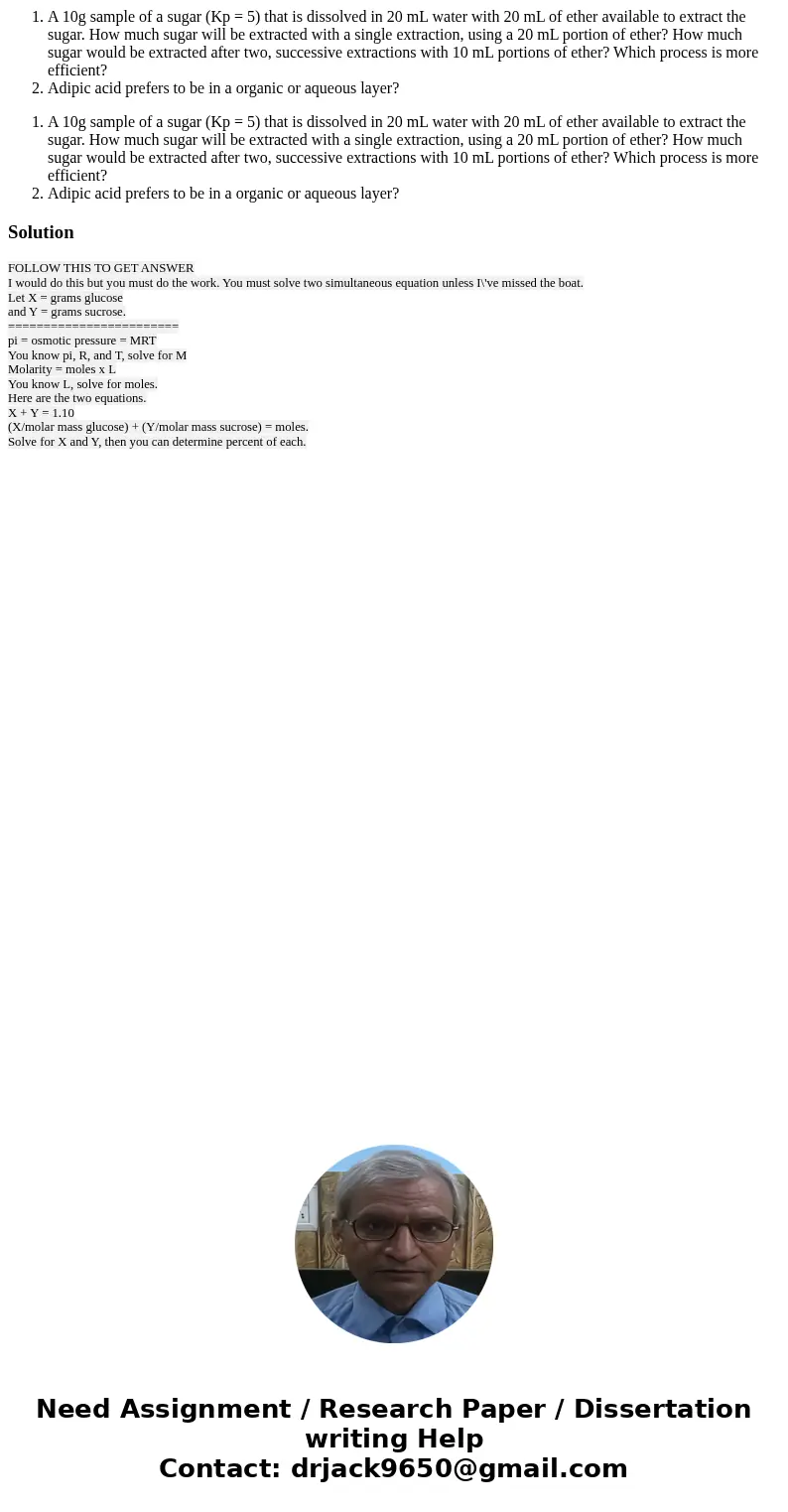A 10g sample of a sugar Kp 5 that is dissolved in 20 mL wat
- A 10g sample of a sugar (Kp = 5) that is dissolved in 20 mL water with 20 mL of ether available to extract the sugar. How much sugar will be extracted with a single extraction, using a 20 mL portion of ether? How much sugar would be extracted after two, successive extractions with 10 mL portions of ether? Which process is more efficient?
- Adipic acid prefers to be in a organic or aqueous layer?
- A 10g sample of a sugar (Kp = 5) that is dissolved in 20 mL water with 20 mL of ether available to extract the sugar. How much sugar will be extracted with a single extraction, using a 20 mL portion of ether? How much sugar would be extracted after two, successive extractions with 10 mL portions of ether? Which process is more efficient?
- Adipic acid prefers to be in a organic or aqueous layer?
Solution
FOLLOW THIS TO GET ANSWER
I would do this but you must do the work. You must solve two simultaneous equation unless I\'ve missed the boat.
Let X = grams glucose
and Y = grams sucrose.
========================
pi = osmotic pressure = MRT
You know pi, R, and T, solve for M
Molarity = moles x L
You know L, solve for moles.
Here are the two equations.
X + Y = 1.10
(X/molar mass glucose) + (Y/molar mass sucrose) = moles.
Solve for X and Y, then you can determine percent of each.

 Homework Sourse
Homework Sourse